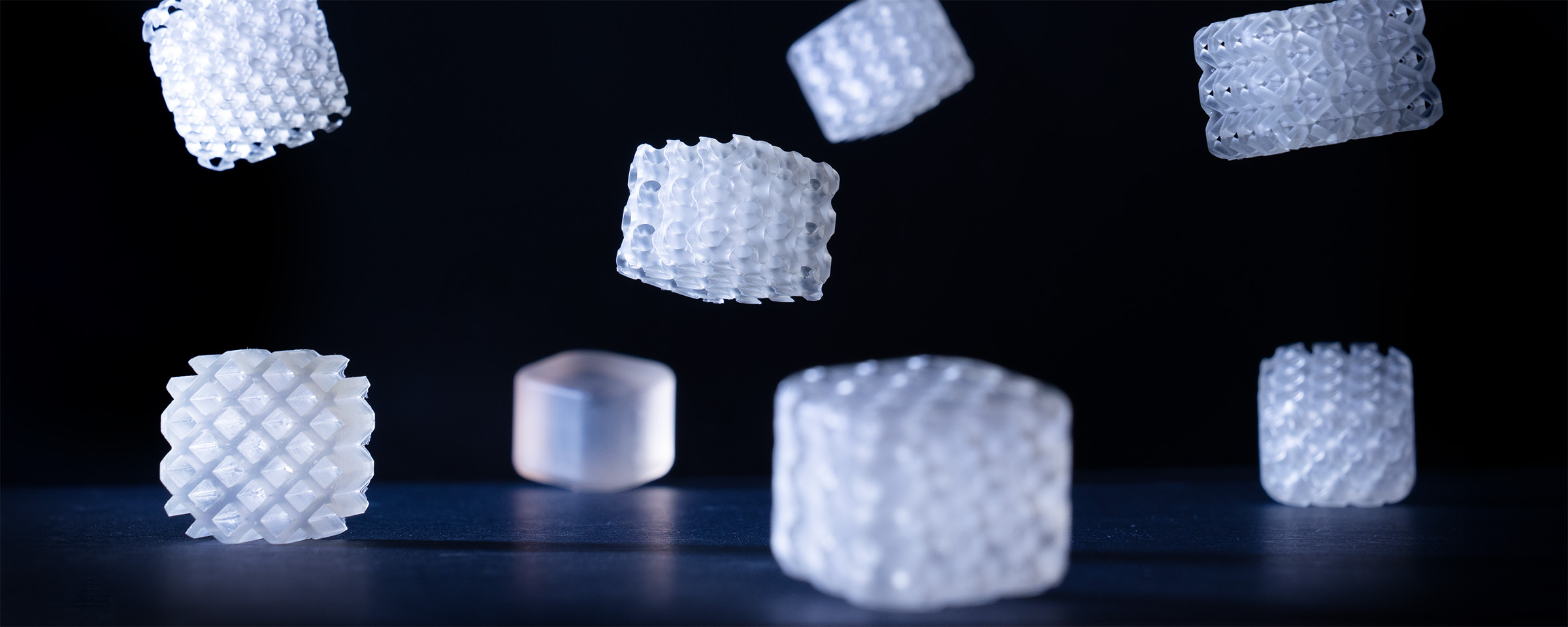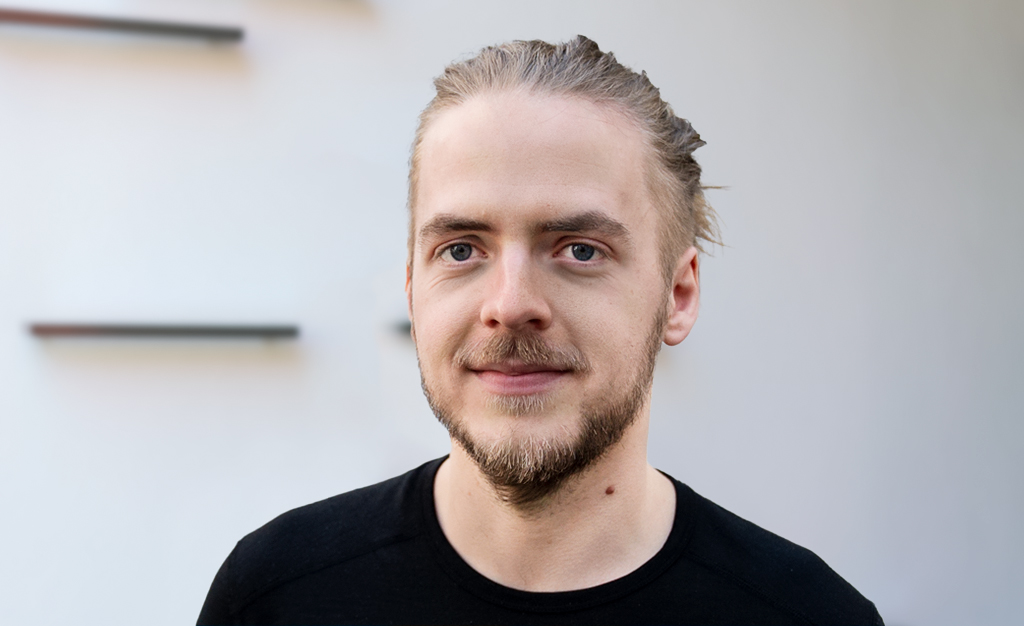Expertise
About us

3D lattices – the future of adaptive product ergonomics

When designing physical products, haptic interactions are an important element of a positive user experience. The requirements for materials are diverse – personal protective equipment should conform to the user's anatomy, shoes should support movement, and backpacks should allow good airflow around the back. Today, foamed plastics are typically used for such applications. However, these present a number of difficulties and limitations in terms of design freedom, durability and recyclability of the material. Some of these problems can be overcome by layering different foams or by adjusting the shape using cavities in the foam, but ultimately the flexibility of foam is limited by its manufacturing process.
Additive manufacturing, on the other hand, enables the production of highly complex geometries and opens up exciting new possibilities with the help of 3D-printed lattice structures.
One base material – an incredible variety of possible properties
3D lattices are “architected materials”, therefore their properties result from the base material, e.g. plastic, and the geometric properties of the lattice structure. This means that many different properties can be achieved from the same chemical material.
By changing the density, 3D lattices can be used to design products where the stiffness in the same component can be specifically optimized for different loads. An example of this is the ability to resolve the necessary trade-off between stability and comfort in bicycle saddles. Here, 3D lattices are used to provide sufficient stability in the area of the sit bones so that they do not sink in and interfere with blood circulation, while at the same time providing more comfort in the area of the soft tissues. Another advantage is the possibility of coarse-mesh structures, which allows for much better air flow than with conventional foams. This ensures better ventilation when used in backpacks.
Creating unique properties and redefining boundaries
Additionally interesting properties can be achieved that are not possible with conventional materials. For example, the midsole of a running shoe can carry the impulse of the runner instead of stopping it. It's even possible to create auxetic materials, which is a material with a negative poisson's ratio – contrary to the usual behavior, this material contracts on the sides when compressed and expands when stretched. In addition, anisotropic properties are possible, these show different behavior in different loading directions.
Insight into the variety of the lattice-structures
A distinction can be made between different types of lattice structures:
- Beam-Based-Lattices consist of connecting elements between evenly arranged vertices.
- Triply-Periodic-Minimal-Surfaces (TMPS) are described by location-dependent functions that split the space into a least two sub volumes and can be thickened by an offset.
- Honeycombs are extruded, two-dimensional grids, such as honeycomb structures, but also corrugated structures such as corrugated cardboard.
- Random-Lattices, such as foam, are created by cells that grow randomly distributed in space at the same time until they touch their neighbouring cells and therefore create a random structure.
By designing the right lattice structure, the stress-strain behaviour can be precisely adapted to the load case. Among other things, the orientation of the lattice to the load direction, the degree of filling and the scaling of the lattice can be optimised. The choice of starting material also plays a decisive role in the properties of the end product.
Sustainability and recyclability
While fresh foam does exhibit elastic behaviour, the fine structures do not retain their shape permanently under load, as can be seen in mattresses or seat cushions. Thanks to the thicker structures, lattices have the potential to retain their elastic behaviour even under continuous load with a longer service life if designed correctly.
Another advantage of 3D lattices over foam is their end of life. Often made of polyurethane, foams cannot be remoulded. As chemical recycling by pyrolysis is currently mainly carried out in small plants, it is cost-intensive and therefore generally not yet economically viable. This is why mattresses in Europe, for example, are either incinerated or sent to landfill. By using thermoplastic polyurethane (TPU), a block copolymer of polyurethane and a thermoplastic whose bonds can be released by heating, products can be reshaped and thus mechanically recycled.
From prototype to mass production
While additive manufacturing processes have mainly been used in the field of prototyping, the industry is rapidly moving towards mass production with successful products such as the Adidas FWD4D or the Specialized S-Works Romin EVO Mirror. In addition to the material properties, the advantages lie in short iteration cycles and agile methods in hardware development. In addition, there is great potential in customisability and adaptation to individual anatomy, which has hardly been exploited to date. However, good service design concepts are a requirement for utilising this potential.
State-of-the-art materials, manufacturing processes and service design concepts for your product
By combining technical expertise with UX and service design, we develop integrated solutions. We support you in the development of your customisable product from the first prototype through to the finished product and service based on the anatomy of your end users. In our prototype workshop, we work with different materials, lattice types, filling levels, manufacturing processes and application contexts. This creates a growing material and knowledge library for various applications in the product development process.
It is our pleasure to assist you in further developing your existing products or creating new products together with you.
You’re interested in an talking about lattices and their application in your product?